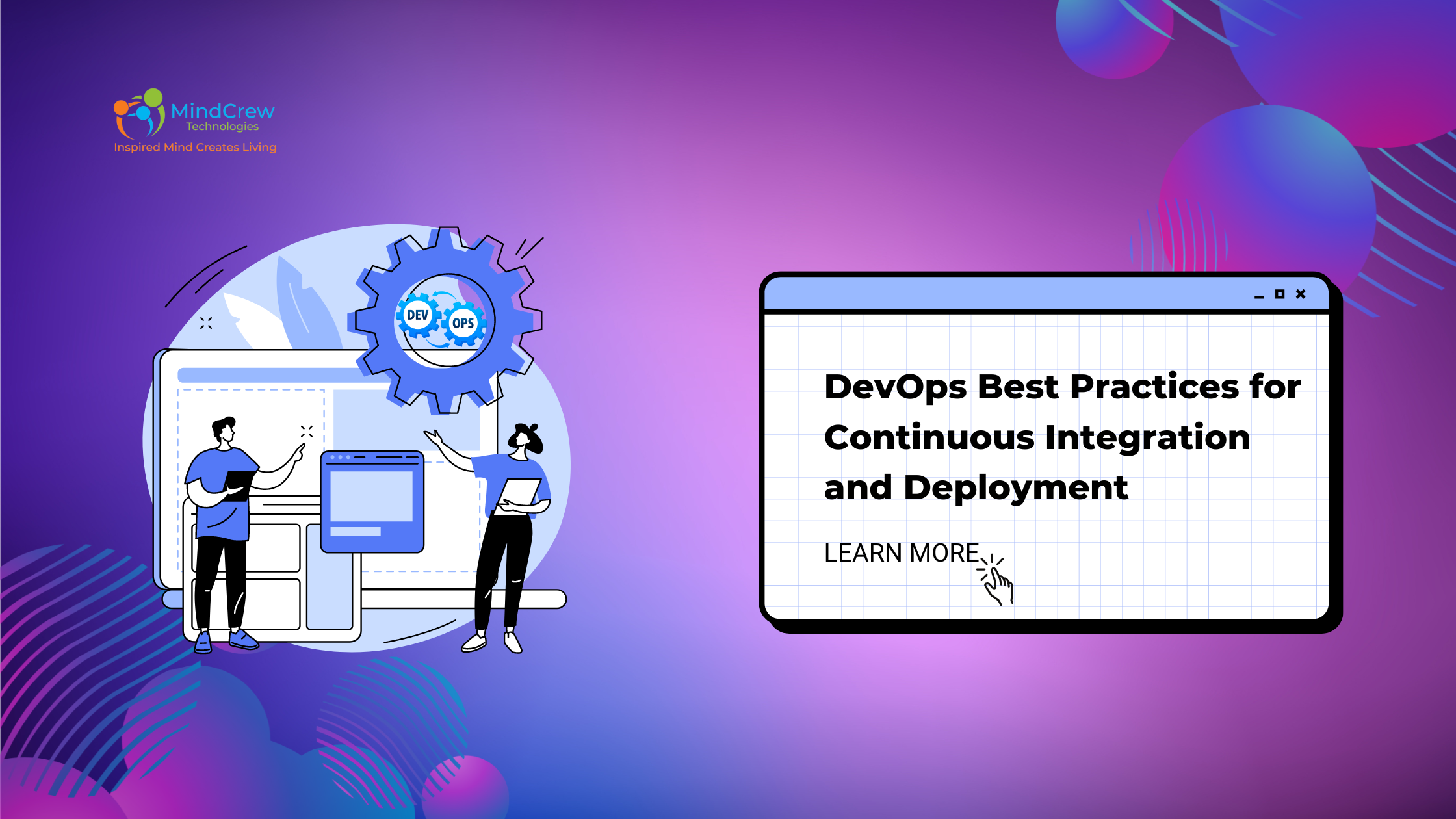DevOps Best Practices for Continuous Integration and Deployment
In today’s fast-paced digital world, the efficiency and speed of software delivery can make or break a business. Continuous Integration (CI) and Continuous Deployment (CD) are crucial components of the DevOps philosophy, which aims to streamline software development processes, improve product quality, and accelerate time-to-market. In this blog, we’ll explore the best practices for CI and CD, supported by statistical data and written in a straightforward, easy-to-understand language.
Understanding DevOps and Its Importance
DevOps is a set of practices that combines software development (Dev) and IT operations (Ops). The goal is to improve collaboration, increase efficiency, and deliver high-quality software at speed. According to the State of DevOps Report 2023, organizations that adopt DevOps practices experience 24 times faster recovery from failures, 3.5 times more frequent deployments, and 2 times lower change failure rates.
Continuous Integration (CI) Explained
Continuous Integration (CI) is the practice of frequently integrating code changes into a shared repository. This process involves automatically testing and validating these changes to ensure that new code doesn’t introduce defects. CI helps in detecting issues early, improving code quality, and reducing integration problems.
Best Practices for Continuous Integration:
- Automate the Build Process: Automating the build process is essential for ensuring that every code change is compiled and tested consistently. Tools like Jenkins, GitLab CI, and CircleCI can automate builds and run tests in various environments, reducing manual effort and potential errors.
Statistical Insight: According to The 2023 DevOps Benchmark, 84% of high-performing organizations use automated CI pipelines, which leads to a 30% increase in deployment frequency. - Use a Version Control System: A robust version control system (VCS) like Git is fundamental for managing code changes and collaborating efficiently. It helps in tracking changes, merging code, and reverting to previous versions if necessary.
Statistical Insight: The same DevOps Benchmark report indicates that 72% of teams using VCS effectively report fewer integration issues. - Implement Code Reviews: Code reviews are a critical aspect of CI. They help ensure that code meets quality standards and adheres to best practices. Peer reviews also facilitate knowledge sharing among team members.
Statistical Insight: According to GitLab’s 2023 DevOps Survey, teams that conduct regular code reviews see a 50% reduction in critical bugs. - Maintain a High Test Coverage: Ensuring high test coverage means that the majority of your codebase is tested. Automated testing tools should be used to run unit tests, integration tests, and regression tests.
Statistical Insight: The State of Software Quality Report shows that organizations with high test coverage (above 80%) experience 40% fewer production bugs. - Monitor and Measure CI Metrics: Track key metrics such as build success rate, test coverage, and deployment frequency to gauge the effectiveness of your CI pipeline. This data helps in identifying bottlenecks and areas for improvement.
Statistical Insight: According to Forrester’s Continuous Integration Survey, organizations that actively monitor CI metrics improve their deployment efficiency by 25%.
Continuous Deployment (CD) Explained
Continuous Deployment (CD) takes CI a step further by automating the release of code changes into production environments. This process ensures that new features, bug fixes, and updates are delivered to users quickly and reliably.
Best Practices for Continuous Deployment:
- Automate Deployment Pipelines: Automate the entire deployment pipeline to minimize manual interventions and reduce the risk of errors. Tools like Jenkins, Kubernetes, and Docker can manage deployments and rollbacks efficiently.
Statistical Insight: According to The 2023 State of DevOps Report, high-performing organizations that automate deployment pipelines achieve 46 times more frequent deployments. - Implement Rollback Strategies: In case of deployment failures, having a rollback strategy ensures that you can revert to a stable version quickly. This minimizes downtime and user impact.
Statistical Insight: A survey by DORA (DevOps Research and Assessment) shows that organizations with robust rollback strategies reduce recovery time by 60%. - Use Feature Flags: Feature flags allow you to enable or disable features without deploying new code. This helps in testing features in production environments and rolling out changes gradually.
Statistical Insight: Feature Flag Best Practices 2023 reports that teams using feature flags experience 30% faster release cycles. - Monitor Deployment Performance: Use monitoring tools to track the performance of your deployments in real-time. This includes tracking application performance, user feedback, and error rates.
Statistical Insight: According to New Relic’s State of Monitoring Report, organizations with real-time monitoring capabilities detect and resolve issues 50% faster. - Ensure Compliance and Security: Implement automated security checks and compliance validations as part of the deployment pipeline. This helps in identifying vulnerabilities and ensuring that the code adheres to regulatory standards.
Statistical Insight: The 2023 DevSecOps Report reveals that incorporating security into CD pipelines reduces the number of security incidents by 40%.
Conclusion
Adopting best practices for Continuous Integration and Continuous Deployment can significantly enhance the efficiency, quality, and speed of your software delivery processes. By automating builds and deployments, maintaining high test coverage, and implementing robust monitoring and security measures, organizations can achieve faster time-to-market, higher customer satisfaction, and improved overall performance.
At Mindcrew Technologies, we understand the importance of seamless software development and deployment. Our expertise in DevOps practices ensures that your software projects are delivered efficiently and effectively, aligning with industry best practices. For more information on how we can help you optimize your CI/CD processes, contact us today!
By integrating these best practices into your CI/CD pipeline, you can stay ahead of the competition and deliver high-quality software that meets the ever-evolving needs of your users.







